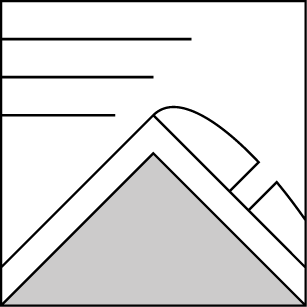Basic Information
Observation Details
Observation Date:
March 13, 2022Submitted:
March 14, 2022Observer:
SAC - VandenBosZone or Region:
Sawtooth and Western Smoky MtnsLocation:
Fishhook (6,500-9,500')Signs of Unstable Snow
Recent Avalanches?
YesCracking?
IsolatedCollapsing?
IsolatedSnow Stability
Stability Rating:
FairConfidence in Rating:
ModerateStability Trend:
SteadyAdvanced Information
Weather Summary
Wind:
Moderate , WNew/Recent Snowfall:
15cm on the moraine, 20-25cm at upper elevationsA brief period of partial sun in the morning, then continued storminess throughout the day. Snowing S-1 to S3 for the duration of my tour, up to shortly before sunset. Winds were a bit variable, but were blowing more often than not.
Avalanche Observations
Visibility was poor, but I did observe one D1 wind slab that had released naturally on a NE aspect at 9,000'. I also intentionally triggered several slabs that broke 40-50cm down. These slabs were small (aerially) thanks to the terrain I encountered them in. I would not have wanted to encounter similar slabs in larger terrain. These slabs were breaking both on mid-storm interfaces and on icy crusts.
Snowpack Observations
Primary goal was to look at the storm in progress. It was difficult to gauge the amount of new snow due to the wind, but I think 20-25cm is a reasonable estimate. Winds were blowing off and on throughout the day, transporting plenty of snow. Visibility was poor but during slightly clearer periods I was able to see large drifts and dunes on many slopes.
Visibility was poor, but I did observe one D1 wind slab that had released naturally on a NE aspect at 9,000'. I also intentionally triggered several slabs that broke 40-50cm down. These slabs were small (aerially) thanks to the terrain I encountered them in. I would not have wanted to encounter similar slabs in larger terrain. These slabs were breaking both on mid-storm interfaces and on icy crusts.
I dug on a NE slope at 8,500' to look at how this new snow was affecting the rain crust+facet weak layer that exists here. This interface is now down 35-45 cm under a very soft slab. I received ECTNs in the upper single digits to low teens in my test, but was able to get small and large columns to pop pretty easily and cleanly on the well-developed facets below this crust.
Avalanche Problems
| Problem | Location | Distribution | Sensitivity | Size | Comments |
|---|---|---|---|---|---|
 Wind Slab
Wind Slab
|
|
Layer Depth/Date: 30-60cm Comments: Rose is shaded based on where these are expected to be largest and most sensitive. |
Terrain Use
Stepped way back today thanks to the ongoing storm and uncertainty involving the weak layers in the upper 1-3' of the snowpack.
